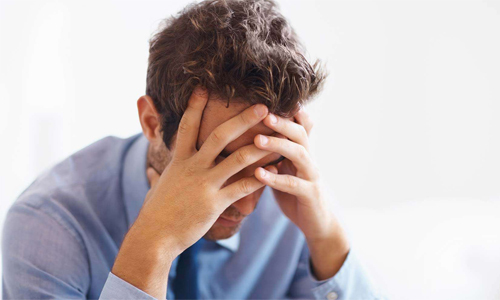The prostate gland is rightly called the second male heart. Outwardly it resembles a walnut about 4 cm in diameter, however, small dimensions do not detract from its importance for the male organism. When the prostate hurts, a man experiences a lot of uncomfortable sensations. The reasons for these pains are many, but almost all of them are associated with pathological processes, so the prostate needs more attention.
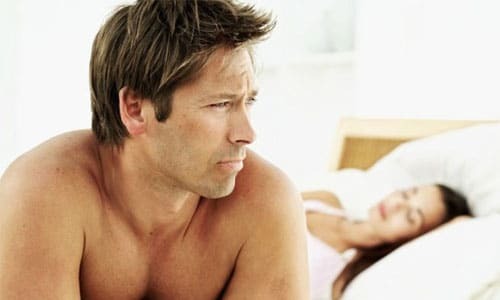
Even a minor violation in prostatic activity is fraught with sexual incompetence, malignant tumor, adenoma and other intractable pathologies, which, in turn, drive a man into a state of deep depression and deprive the optimism of life .
Functions of the prostate
Prostate refers to the glandular organs of the reproductive system, up to anatomically natural dimensions it grows to about 20 years of age, however, after the 45th birthday, it again has a tendency to grow, provoking the appearance of benign hyperplastic changes in the glandular tissues. Such a phenomenon is so often found in urological practice that it is often attributed to a typical sign of old age, like gray hair or wrinkles.
The prostate gland performs many functions, it is responsible for the fertilizing capacity of the sperm and the stability of sexual abilities, it does not allow the sperm to be thrown into the urinary cavity, it controls the urinary processes. In other words, the performance of the genitourinary sphere as a whole depends on the quality of the prostatic activity. Prostate performs a secretory and barrier function. The secretory function is to synthesize androgens, the production of bioactive elements and the prostatic secretion necessary for the highest quality of sperm. In the process of sexual intercourse, pleasant sensations are created due to the highly developed innervation system of the gland.
Barrier functions of the prostate are the separation of the processes of ejection of sperm and urination. Muscle prostate tissue serves as a sphincter for the bladder, preventing penetration of sperm into it. In addition, the prostate gland controls urinary activity, if necessary, detains the urine or releases it. Therefore, with violations of prostatic activity, a man may have many problems with the health of the genitourinary sphere.
Probable prostatic pathologies
When the prostate is ill, this may indicate the presence of serious pathologies. One of the reasons for such manifestations may be adenoma, which consists in an increase in the size of the gland due to the pathological proliferation of its tissues. According to statistics, prostatic adenoma is found in half of 50-60-year-old men, 9% of 40-year-olds and almost 80-year-olds.

Sometimes prostate pains are caused by a malignant tumor process. A similar pathology is usually found in patients over 65, however, there are cases when it is found in younger men. This disease is characterized by a slow and latent development, so it is often found already in advanced stages. Also, pain can be associated with prostatitis, which occurs mainly in relatively young men.
Other causes of pain
Factors provoking the appearance of pain in the prostate are conditions like:
- Chronic or acute form of prostatitis;
- Concrements in the prostate gland;
- Cystic processes;
- Malignant tumor process;
- Straight intestinal pathology;Stasis of the prostatic secretion;
- Hormonal imbalance;
- Inflammations of the paraurethral gland;
- Abnormally low immune status;
- Hormonal malfunction, etc.
Sometimes, this morbidity is explained by an unhealthy diet, leading to constipation and digestive disorders.
Hazardous clinical manifestations
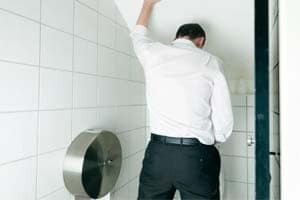 If a man has other characteristic symptoms along with prostatic pain, then it is worthwhile to contact a urologist, because they can indicate dangerous health disorders. Especially disturbing signs are problems with urination - difficulties, frequent calls, weakening or interruption of the jet, a feeling of incomplete emptying, etc. In addition, one can not ignore the occurrence of edema of the testicles, soreness in the sacral or inguinal region, painful process of urination.
If a man has other characteristic symptoms along with prostatic pain, then it is worthwhile to contact a urologist, because they can indicate dangerous health disorders. Especially disturbing signs are problems with urination - difficulties, frequent calls, weakening or interruption of the jet, a feeling of incomplete emptying, etc. In addition, one can not ignore the occurrence of edema of the testicles, soreness in the sacral or inguinal region, painful process of urination.
For prostatic pain, there is an inherent irradiation in the anus, crotch, scrotum or lower back. Often, painful symptoms are aggravated after sexual intimacy, increased physical or psychological stress, alcohol abuse, hypodynamia, abstinence, or excessive sexual activity.
Classification of painful manifestations
Pain in the prostate gland is classified according to the etiological character. It may differ slightly depending on the underlying cause, so it is necessary to consider separately the various types of pain.
Pain symptomatology with adenoma
Pain symptomatology in the prostate begins to manifest in later stages of adenoma development. Often, soreness accompanied by secondary cystitis or prostatitis. Usually prostatic adenoma is accompanied by increased urination, weakening of the jet, lengthening the process of urination, a feeling of incomplete emptying, etc. Some cases of benign hyperplasia lead to a delay in urine, which requires mandatory intervention by specialists. Pain in the prostate in adenoma is usually associated with a delay in urine.
Oncological pain
Prostatic cancer is usually found in 50-60-year-old patients, develops as a result of benign hyperplasia, carcinogenic effects, or heredity. Usually prostate cancer is characterized by a symptomatic triad: pain, spotting in the urine and problems with urination. At first, pain symptoms are localized in the perineum and are noctus. With the progression of the pathology, the pain becomes permanent, debilitating and painful, it does not lend itself to the relief of pain medications, so the drug patient is prescribed narcotic drugs.
After massage
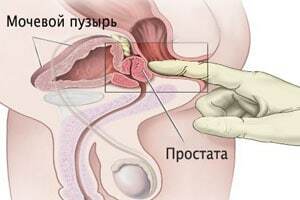 If a man is treated with prostatitis through massage procedures, then after the sessions he may be disturbed by painful symptoms. The prostate massage should be performed only by a narrowly specialized medical specialist, because the wrong technique of performance is fraught with unpredictable health consequences.
If a man is treated with prostatitis through massage procedures, then after the sessions he may be disturbed by painful symptoms. The prostate massage should be performed only by a narrowly specialized medical specialist, because the wrong technique of performance is fraught with unpredictable health consequences.
If after a prostate massage a man feels a burning pain, it is necessary to inform the doctor about it so that he changes the tactics of the effect on the gland. To avoid post-massage burning, a man is recommended to refrain from urinating for half an hour after the procedure.
If the prostate hurts after sex
If the prostate begins to bother with soreness after a love affair, then this may indicate the development of chronic prostatitis. Usually painful symptoms focus on the perineum, however, can radiate into the anus, groin and pubic region, genitals and thighs. Usually, the pain with prostatitis is characterized by constancy and pulling character, can occur with urination, ejection of sperm or after defecation.
Usually soreness of this origin is accompanied by itchy sensations in the intimate area, weakness, insomnia and reduced performance.
Tormenting pain after defecation
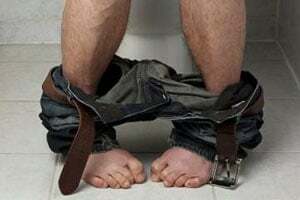 The appearance of pain after defecation indicates the development of malignant oncology, abscesses or prostatitis. In prostatitis, the patient additionally feels weakness and lack of appetite, chills and dysuria, frequent constipation, throbbing soreness in the anus.
The appearance of pain after defecation indicates the development of malignant oncology, abscesses or prostatitis. In prostatitis, the patient additionally feels weakness and lack of appetite, chills and dysuria, frequent constipation, throbbing soreness in the anus.
If an abscess forms on the background of prostatitis, then during the emptying of the intestine and after it the patient notes the symptoms of pronounced intoxication and strong weakness. If there is an autopsy of the abscess, then the patient will have purulent masses in the urine or feces.
Treatment measures
Treatment of pain in the prostate involves the elimination of the etiological factor that led to the occurrence of a similar syndrome.
- When an adenoma is prescribed drugs that help to eliminate a pronounced symptomatology. If the conservative approach is ineffective, then surgical practice is applied.
- If the causes of pain are caused by an infectious prostatitis, then antibiotic therapy is indicated.
- In prostate cancer treatment process consists of several methods depending on the age of the patient, the degree of cancer development, oncology progression, etc. Radiotherapy, chemotherapy, etc. are used.
In inflammatory processes in the prostatic tissues, rectal suppositories are often used that significantly alleviate the patient's condition. If there are painful manifestations in the prostate, it is necessary to immediately go through a urological examination under the guidance of a qualified specialist.


